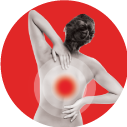
Since time immemorial, humanity has witnessed the emergence of an assortment of epidemics, some mild in nature and some so virulent that they almost wiped out half of the world’s population. However, in the recent centuries, the fight against life-threatening diseases like swine flu symptoms has evolved leaps and bounds while delivering results that have led to the eradication of illnesses like polio and smallpox.
Although man's battle against bacteria, viruses, and microbes continue to bear excellent fruits, yet there are times when these invisible killing machines mutate or transform themselves. This transformation brings about a whole new series of disease and deaths, across large swaths of land.
One such pandemic that is still doing rounds across the globe is Swine Flu. Also known as H1N1, initially, swine flu was isolated to the animal kingdom, specifically pigs. However, in 2009, the first case of swine flu in humans was reported in Mexico and soon turned into a global pandemic, with the World Health Organization (WHO) terming it its first-ever public health emergency of international concern or PHEIC.
Swine Flu Symptoms
Although swine flu represents different characteristics and virulent nature than other forms of influenza, yet the symptoms of both are eerily similar. Patients suffering from H1N1 usually exhibit symptoms mirroring influenza that includes headaches, dry cough, fever, sore throat, and fatigue. While these are common swine flu effects and symptoms, there have been notable cases, wherein affected individuals have also exhibited vomiting, diarrhea, and even neurological issues as part of H1N1 flu symptoms.
Medication for the Flu Virus
While the 2009 swine flu pandemic hit men, women, and children of every age and geography, yet it was later deduced that certain factors might make some more vulnerable to this disease than others.
People of over 65 years of age, children below the age of five, and pregnant women were found to be more susceptible to the virus. Furthermore, children with pre-diagnosed neuro-developmental conditions including muscular dystrophy and cerebral palsy were also found to be extremely prone to swine flu.
Besides, the usual cases of swine flu victims, WHO and Centers for Disease Control & Prevention had during the pandemic an alarming pattern of severe H1N1 cases in healthy individuals.
Some of the patients infected with swine flu virus exhibited rapid deterioration within three to five days of being infected. In several cases, this rapid escalation of swine flu led to respiratory failure within 24 hours, thus requiring immediate admission to the intensive care units.
In 2009 it led to the invention of H1N1 medicine and vaccines for the treatment of H1N1 infections on human subjects. The very first human-targeted swine flu vaccine (nasal spray variant) was introduced in early October 2009 and was recommended for patients between the age of 2 to 49.
The H1N1 vaccine further evolved into an intravenous vector and was extensively tested by the CDC before being recommended for the elderly, infants, and even pregnant women. Furthermore, with the introduction of the second H1N1 vaccine variant, the nasal spray version has since 2016 been classified as 'not recommended' for swine flu treatment.
Natural remedy for Cough, Cold & Flu symptoms
Phytorelief CC, one of the best supplements for the immune system, features PhytoAdvance technology. This best herbal supplement for cough and flu symptoms offers significant relief for common cold, dry cough, and throat infection. Comprising the goodness of turmeric, pomegranate, and ginger extracts, Phytorelief CC offers anti-inflammatory and anti-microbial properties that can provide long-lasting natural cough relief as you recuperate from the H1N1.
As the swine influenza symptoms begin to recede with the combination of the H1N1 vaccine and PhytoRelief CC, you should begin to have flu recovery, cure from common cold, reduced sore throat, and throat pain. Over time it serves as the best immune booster and herbal supplement for flu.
The article is based on the information available in public and which the author believes to be true. The author is not disseminating any information, which the author believes or knows, is confidential or in conflict with the privacy of any person. The views expressed or information supplied through this article is mere opinion and observation of the author. The author does not intend to defame, insult or, cause loss or damage to anyone, in any manner, through this article.




































